
Review contents

Plus500 is one of the top trading platforms in the world. It’s well established, secure, and super popular. The platform is user friendly, packed with trading tools, and some great, unique features such as +Insights (covered below). It’s low cost, and the customer service is excellent. Overall, 5 stars.
Plus500 is a super popular trading platform – there’s over 24 million customers worldwide, and available in over 50 countries (UK included). There’s close to a whopping $1 trillion traded. That’s impressive.
And for good reason. It’s one of the best trading platforms to use, as it’s reliable, and very fast. Plus, it’s low cost, and has a huge range of investment options – in fact, there’s over 2,800, including a huge range of stocks and shares (CFDs), and a unique range of CFDs on options and industry sector indices (we’ll cover all this in detail below, along with the fees).
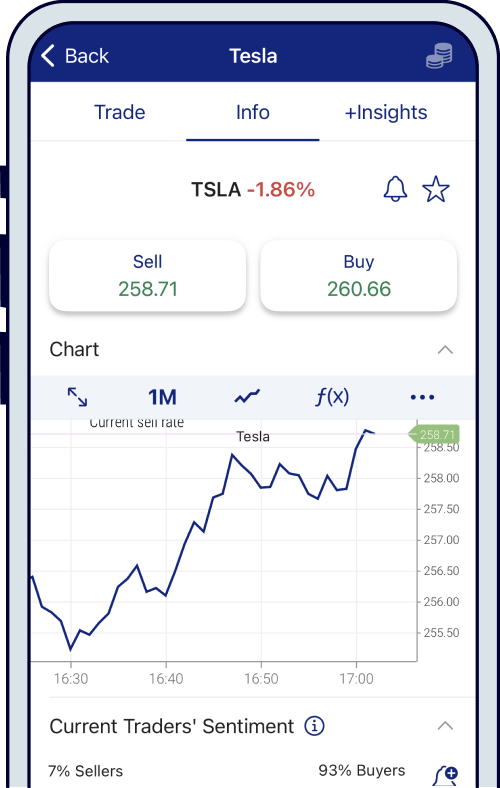
Plus500 is a multi-asset platform offering CFDs via a CFD trading platform, and shares via an investment platform.
We’ll cover what they are in detail below, but essentially you are trading the price of something (like a stock), rather than buying it directly. This means it often has cheaper fees, with more flexibility, where you can do things such as a leverage trade (trade with borrowed money). Again, explained below.
The trading platform itself (the software you use to trade (buy and sell)) is excellent. It’s fast (critical when trading), there’s loads of tools and features to help you trade more efficiently, and it’s available on your computer and as a mobile app too – and highly rated with 4.2 out of 5 on the Apple App store, although only 3.8 out of 5 on the Google Play store.

If you’ve heard enough already, here’s where to get started with Plus500¹. If not, let’s run through in detail now.
No. Plus500 is for experienced traders only. If you're a beginner, it's best to check out eToro¹, which is easier to use and lots of resources to learn. Here's our eToro review to learn more.
A great low cost trading platform with unique features to help you trade and excellent customer support.
The trading platform itself is great. It's got a wide range of advanced features for more advanced traders. It’s available on desktop (computers), mobile, and tablet.
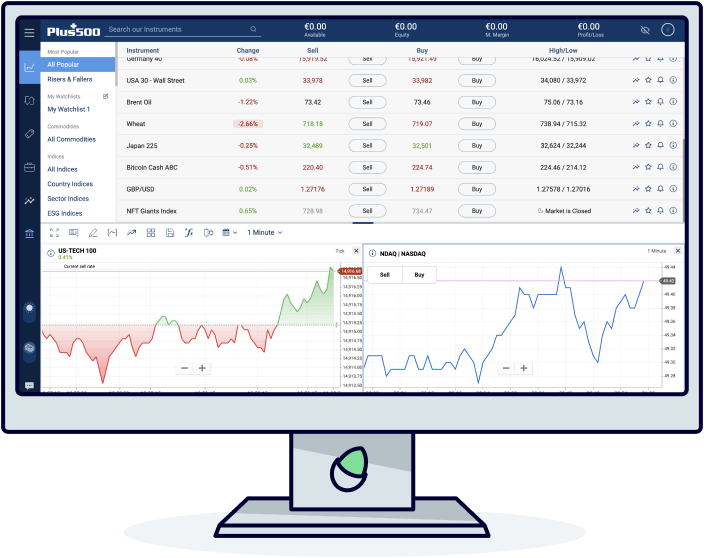
The software is bespoke to Plus500, and you’ll have to use the platform itself to trade – there’s no integrations with 3rd party trading platforms such as MetaTrader 4 or MetaTrader 5 (trading software some traders like to use).
It has everything you need to support your trading style and strategies, with a great charting system (visual view of an asset price over time – essential for traders), that updates in near real-time (instant).
There’s a great range of customisable features, such as time ranges (e.g. view by hour, day, month etc) and chart types (e.g. line chart or candlestick). There’s also drawing tools, to help you with your analysis.
Plus, a wide range of indicators you can overlay (extra data on the chart to identify trends in the price over time).
Don’t worry, if this is a bit confusing. You’ll pick it up easily when using the great training academy and walkthroughs with Plus500.
There’s also a huge range of data available for each asset (e.g. a stock), which you won’t find on other trading platforms. The more data the better right?
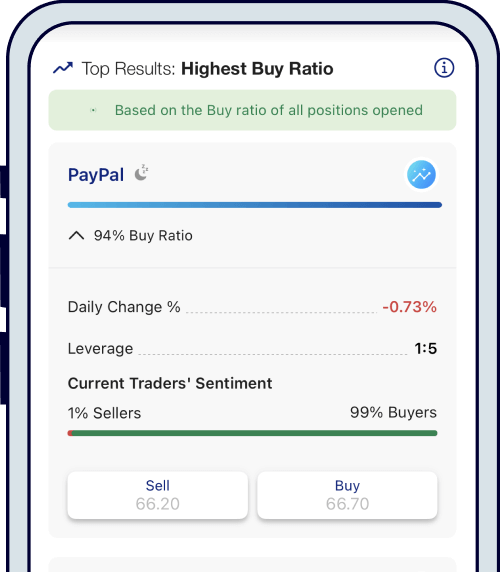
This is called +Insights, and can seriously help improve and maximise your trading potential. We’ll cover this in more detail below.
You can also set things like price alerts via email and text message, and alerts for things like sentiment (number of buyers vs sellers), and price percentage increases. So you won’t miss a thing, even if you’re away from your desk.
The investment options (assets such as stocks) are easy to find, in an easy to understand layout, and there’s a great search feature.
Depositing and withdrawing cash is super fast too – deposits are often instant (via card, bank transfer, and things like PayPal), and withdrawals only take a few hours.
Overall, it’s one of the best trading platforms out there.
Plus500 is a CFD trading platform, rather than a stock broker (where you buy investments directly). CFDs stand for Contract For Differences and are super popular with traders around the world.
CFDs are where you are effectively trading the price of an asset (e.g. a stock), rather than buying and owning it directly. They typically have less fees, and offer some more advanced trading options. Let’s run through them now.
With CFDs, you are technically entering into a contract with the broker, in this case a contract with Plus500, about the price of an asset in the future (with no set date when it ends – it ends when you sell), rather than buying and owning the asset directly (e.g. buying shares).
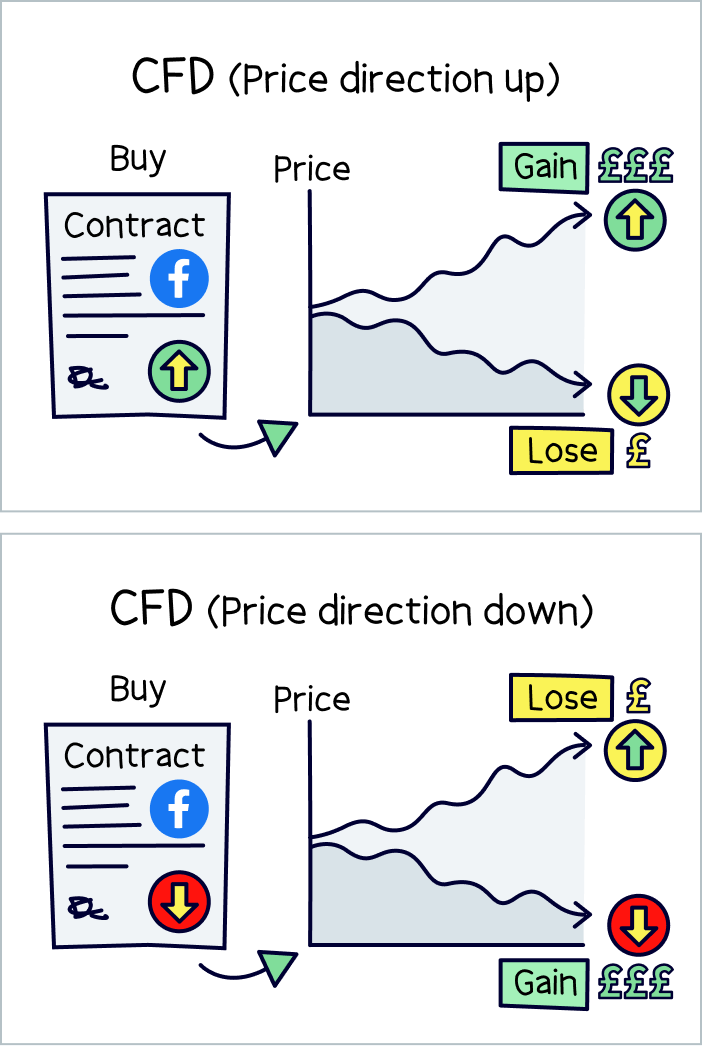
CFDs offer the ability to trade both price directions, up and down (speculating the price of an asset will go up is called going long, and speculating the price will go down is called going short). They also offer the ability to trade with leverage…
One of the main advantages of trading CFDs is the ability to trade with borrowed money (called leverage or margin trading) – and Plus500 is a great option for this.
Leverage is where you can trade with more money than you actually have in your account, and it works by effectively using money from the broker (Plus500) to increase the amount you can trade with.
You’ll use your own money in your account as a deposit (collateral), for borrowing more cash to then place a trade with – which could mean bigger returns. Be careful though! Leverage can not only magnify your profits, but losses as well.
It’s a bit confusing, but let’s use an example. Say you want to invest £50 on a trade, predicting the price of the share is going to go up in value, and you are pretty confident, so want to use 5x leverage (or 5:1). With a leveraged trade you could make a trade worth £250, rather than £50 (5x higher).
Let’s say the stock price increases by 10%. You’ve now made 10% of £250, rather than £50, and so have made £25, rather than £5. Pretty great right?! That’s a massive 50% increase on your money (£50).
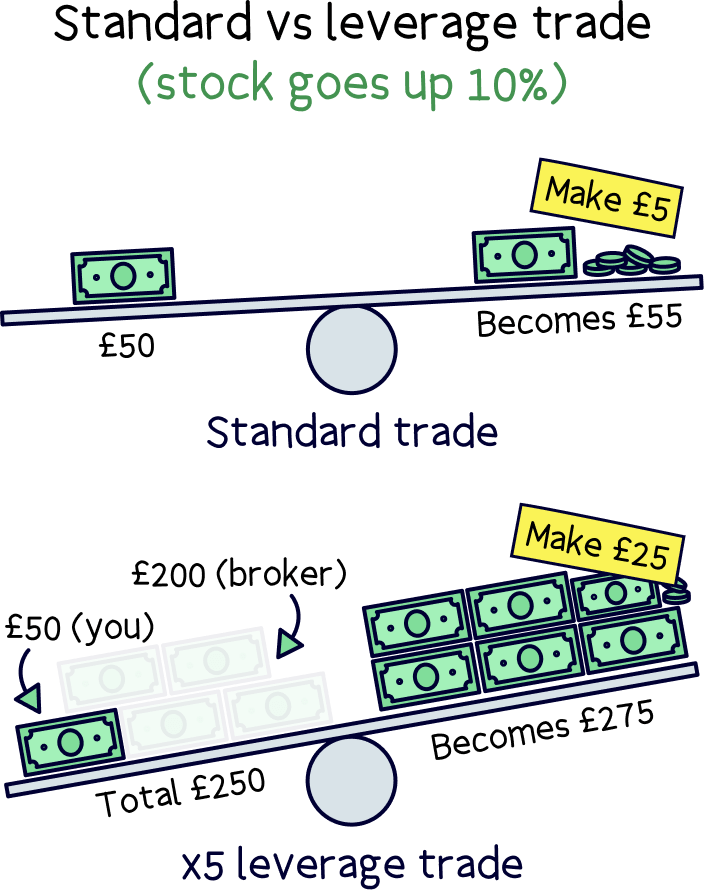
But, on the flip side, if the stock price went down 10%, you would have lost £25, rather than just £5 – half of your money. Not great. It’s very high risk, but the rewards can be much higher. However, we recommend only using leverage with a sensible trading strategy.
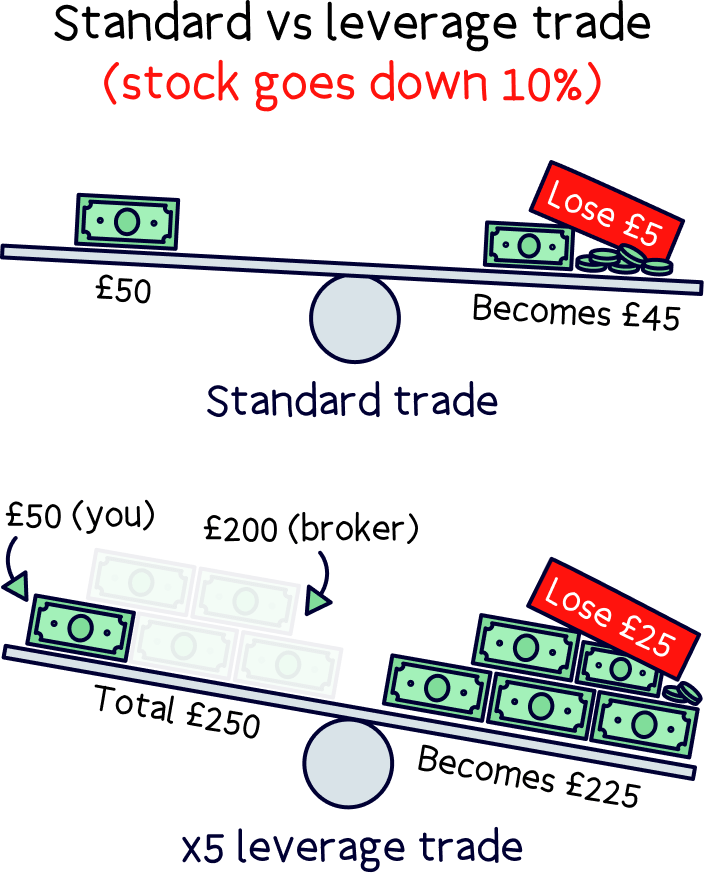
Plus500 offer leverage on all their trades, and the maximum amount allowed varies by the asset type (e.g. stocks, or ETFs). Here’s a run through:
This is a great feature unique to Plus500. +Insights gives you access to up-to-date information on the trends across trading markets (e.g. US stock market), using data from the other 24 million Plus500 traders.
So, you can see what new stocks are hot and trending, which have been the most profitable, or simply what everyone else is trading.
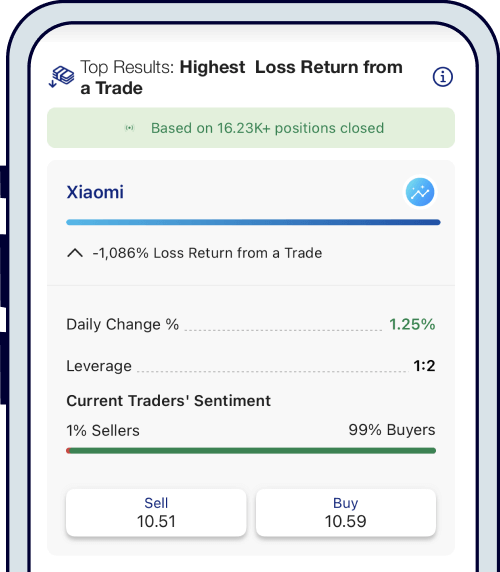
Here’s the most popular insights:
You can also filter by date range, location (e.g. UK), and asset class.
For instance, you could see the most shorted stock in the UK within the last 7 days, or the most profitable trade over the last 7 days, and which stock and how much was returned (as a percentage).
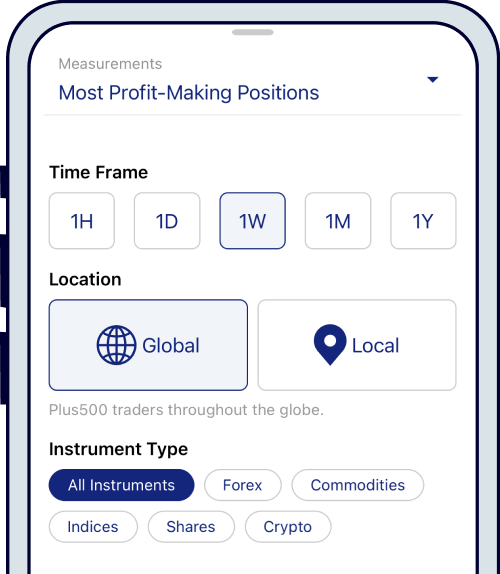
Plus500 also provides insights for individual assets too. For instance, you can view specific information about a stock, such as if it’s in the list of most traded (and which position in the list), alongside how many people have viewed it recently, and whether it’s a trending asset or not.
You’ll also be able to see the ratio of buyers to sellers (called current traders’ sentiment), and even how often it’s mentioned in the news around the world, and on social media. Pretty cool.
Pulling all the data together, Plus500 will give a specific score about an asset, called the crowds impression. This is how traders on the platform as a whole feel about an asset, which ranges from very negative to very positive.
And to make this insight even more useful for traders, they’ll show how rational (sensible) the ‘crowd’ is compared to real-market data, and how much news is supporting the crowd's view.
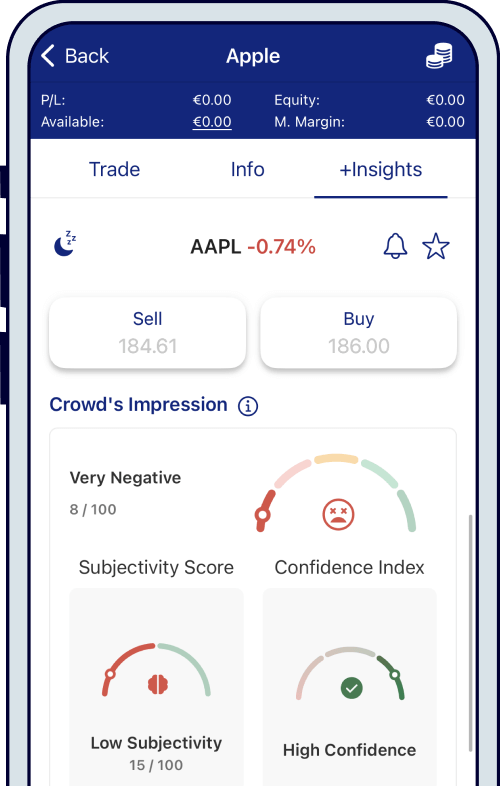
Overall, this is a pretty amazing feature – if your trading strategy is based on momentum and trends, you’ll probably want to check this out.
+Insights can help you get an instant understanding of a particular asset, showing not just what other traders are doing, but also how they feel about it (e.g. positive), and how much exposure it’s getting in the news and on social media. It could be a winning formula.
By the way, this feature is completely free, there’s no extra fee. Learn more about +Insights on the Plus500 website¹.
Plus500 also shows an ESG score for stocks (companies). This is pretty great, you’ll be able to see how a company is performing in terms of their impact on the world and the environment.
ESG stands for environmental, social and governance, and is a measure of how a company is impacting the world – such as polluting the atmosphere, or if it is associated with poor labour practices (such as slave labour) and even things like its overall business ethics.

Plus500 provides a total score (out of 10), an industry ranking, and then the average of the industry as a whole and even industry subcategories (to compare with other companies in the industry).
The score is then broken down into categories, which each have a rating out of 10, and then subcategories within those – it’s pretty comprehensive.
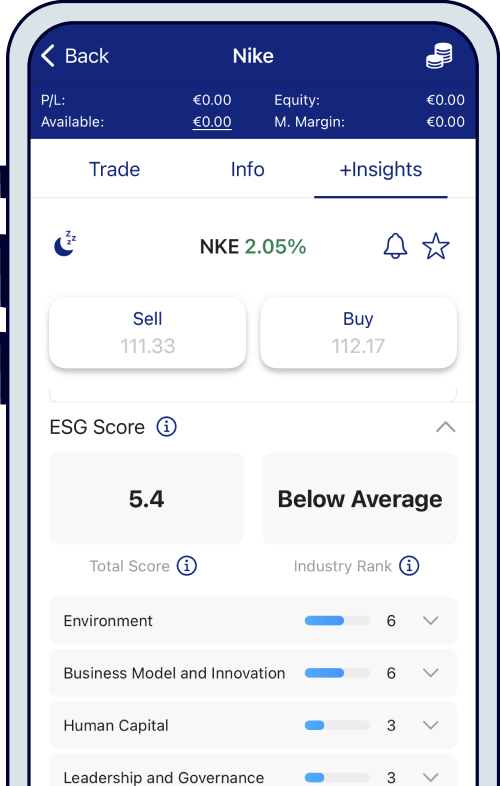
The categories are:
Note: the data is provided by FactSet, a large, reliable and trustworthy data organisation. They provide investment data and insights to businesses across the world, and now you have access too.
Plus500 has got pretty much every trading feature you might want to help support your trading strategies – and most importantly, automating lots of your trading, saving you time to do more research for investments.
Here’s a run through of all the popular trading features:
You’ll be able to see live stats on each asset – within the last 5 minutes. Meaning you can see the change in price in near real-time as a percentage (e.g. if the price is dropping), you’ll also be able to see the last 60 minutes and last day, instantly as percentages – this saves a lot of time looking at charts!
Across these 3 time periods (5 minutes, 60 minutes and 1 day), you’ll also be able to see if the current price is high or low. E.g. if the current price is on the lower end of the price over the last day, or if it’s currently at the high end. Pretty useful for certain trading strategies.
Fairly simple, but a great feature, you can set a price to buy (or sell) at (placing an order), which will execute immediately when the price is reached – allowing you to automate a lot of your trading.
You can set your order to automatically sell when you reach a certain price, securing your profit. (Also called take-profit orders.)
A stop loss order is where you set an order to sell your asset automatically when it reaches a certain price, in order to reduce your losses on the trade. Very useful for automating your trading.
Sometimes when the market moves fast (e.g. price comes down a lot very quickly), your stop loss orders might not actually get executed, as the price has already moved rapidly past the price you’ve set – meaning you could end up losing a significant amount of cash as you’ll have to sell at less than your stop order.
With Plus500, you can use guaranteed stops. This is where the order is guaranteed to be executed, and so eliminates the risk of the price moving past the price you set.
This isn’t free, it will cost a bit extra, which is covered in a higher spread fee (we’ll cover spread fees below). This is different for each trade and asset, but you’ll see how much it might cost when you are setting up your trade.
You can also set trailing stops, which can help increase profits (or keep profits). A trailing stop is where you set a stop order that rises as the value of the asset rises, and will only execute when the price changes direction.
For instance, if you set a trailing stop of 20%, your trade will keep rising until the price changes direction and drops 20% from the highest price (its peak). This means you can benefit from the price rising for as long as it does until the market changes direction.
With Plus500, you’ll also never be able to lose more than you deposit into your account. This is called negative balance protection, and it means that if your account were to drop a set amount, your positions will automatically be closed (called a margin call).
Note: due to financial regulations, Plus500 must provide this feature.
The amount depends on your trades and how many positions you have open – and you can see all of your open positions easily, in one view, within your account, called ‘account snapshot’.
There’s a wide range of investment options with Plus500, in fact, there’s over 2,800 different (CFD) investments to trade. These cover a range of different investment types (asset classes), such as stocks and shares, ETFs, commodities and foreign exchange (forex).
Here’s a run through of each – they’re all traded via CFDs.
There’s a huge range of stocks and shares (as CFDs) from across the world on Plus500 – with the larger countries (stock markets) such as the UK and USA, to smaller countries such as Ireland and Hong Kong. There’s also a wide range of Australian stocks.
You’ll find all the popular shares such as Apple, Microsoft, Tesla – you name it, it’s probably listed.
Stocks represent the ownership (a ‘share’) of the company, and are traded on stock exchanges all across the world. Normally, if a company does well and grows, the share price typically rises too.
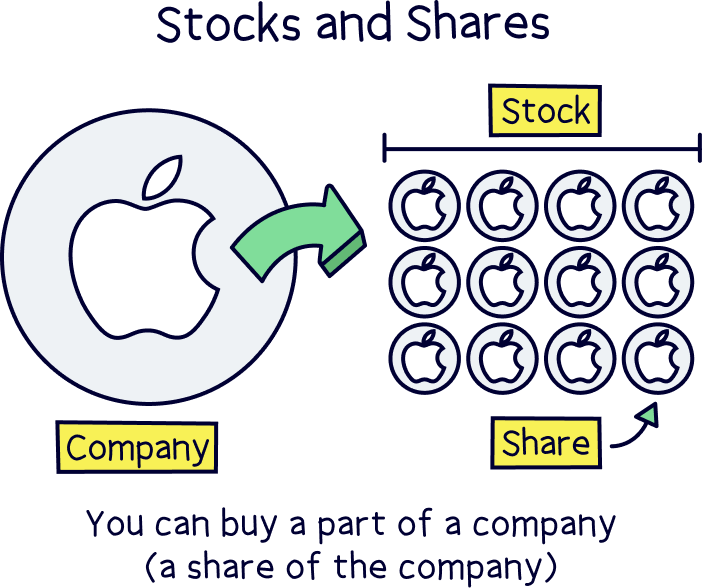
Exchange traded funds (ETFs) are a group of lots of different investments (typically shares) all pooled together into a single investment, to make it easier and cheaper to buy and trade.
When you trade an ETF, you are effectively buying or selling a part of all the investments within the ETF, saving a lot of time and money (in fees). They’re also great to build a diversified investment portfolio (owning many investments).
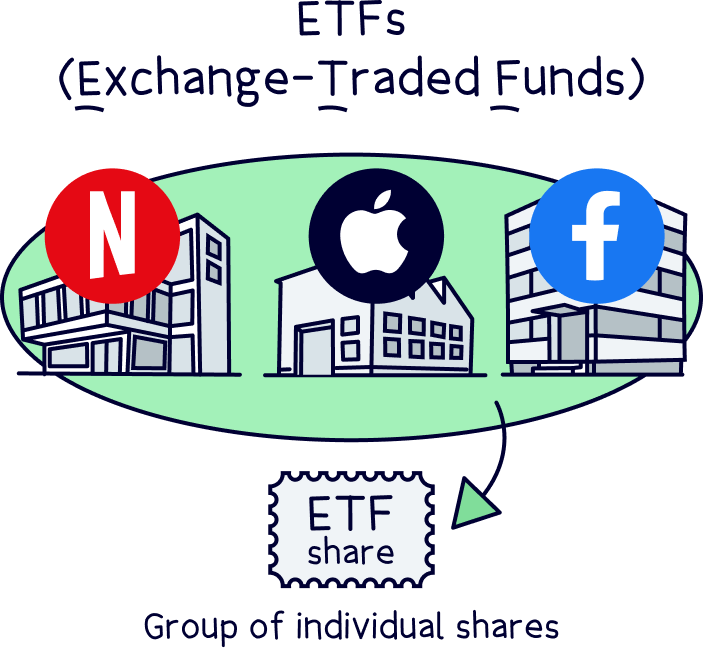
With Plus500, they also offer indices and commodities as ETFs (CFDs)– we’ll cover these both below.
Indices, or a stock market index, is a collection of stocks and shares, all grouped together, and typically offered as a single investment, such as within an ETF.
Grouping shares can provide a measure of something, such as economies of whole countries, for instance indices can represent things such as the top 100 companies in the UK (FTSE 100), the top 500 companies in the US (S&P 500), and other countries across the world.
With Plus500, there’s also indices that group AI companies, ESG and impact indices, cannabis and real estate companies.
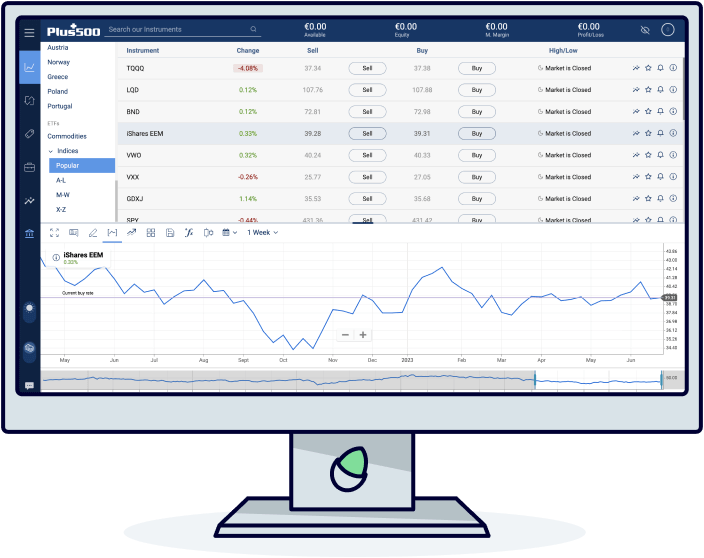
Commodities are real things such as gold and silver, and even oil and gas. You can trade the price of these commodities on Plus500 (via CFDs). There’s a good range too. You also have the option of trading ETFs (via CFDs) of certain commodities (such as a fund that holds gold).
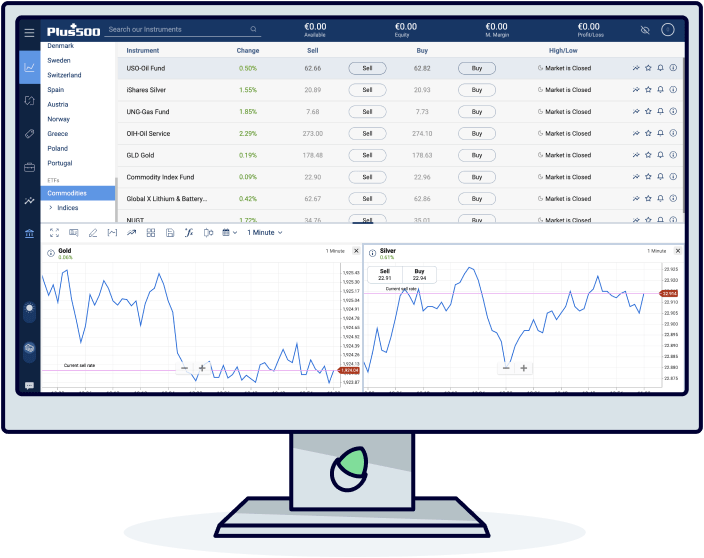
You can also trade options via CFDs. Options are contracts (investments) that give the holder (of the contract) the right to buy or sell an asset (e.g. a stock) at a certain price in the future. The option (contract) itself has a price that changes over time and in relation to the actual asset price (e.g. the stock).
With Plus500, you trade the option price (via CFDs), rather than buying the options directly.
Forex is super popular across the world – and CFDs are a very popular option to trade them too.
Forex is swapping one currency for another, for instance Pounds (GBP) for US Dollars (USD). It sounds simple, but the market is constantly changing – operates 24 hours a day, 5 days a week, and is very reactive to breaking news across the world – which makes it an exciting market, and potentially very lucrative for the best traders.
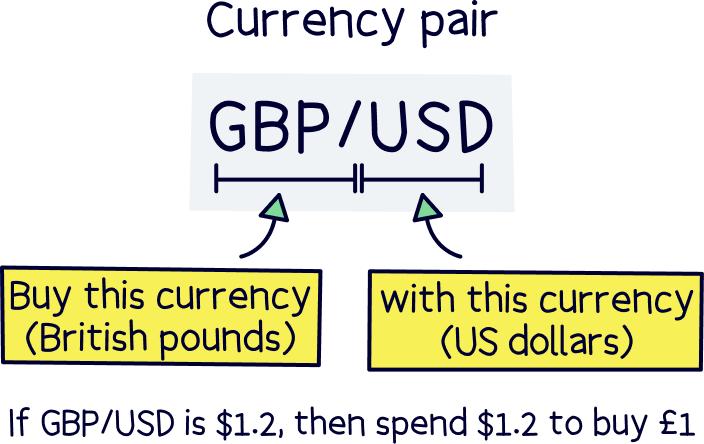
Plus500 is a great option for forex (via CFDs), with a wide range of currency pairs (swapping one currency for another, for instance GBP to USD) – over 65 in fact. There’s all the major currencies, along with minor currencies such as Australian Dollars, and a large range of exotic currencies such as Thai Baht.
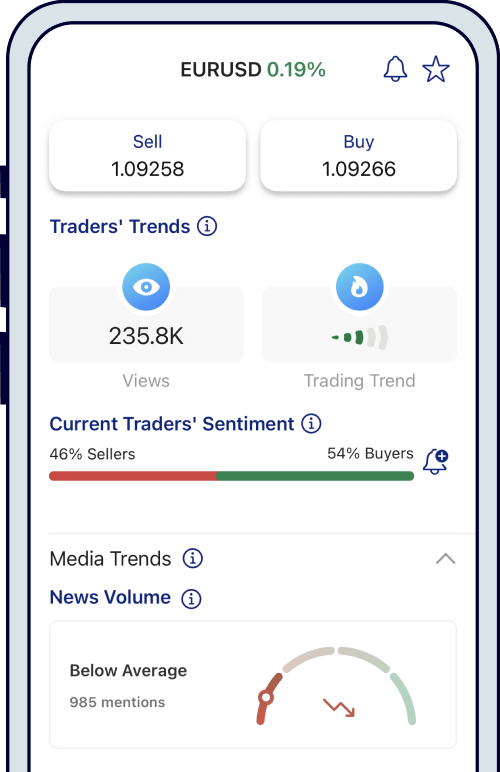
Overall, Plus500 is one of the lowest cost trading platforms out there. The main fee you’ll pay is the spread fee (we’ll cover what these are below).
There’s no fees to open an account, deposit money or withdraw money. If you want to trade foreign stocks (via CFDs), you might pay a currency conversion fee (we’ll cover that below too).
These are the main fees you’ll pay with Plus500, and are often called the bid/ask spread, or buy/sell spread.
A spread fee is a small markup that a trading platform (broker) adds to the price of an asset when you buy or sell. So, you’ll pay the price that you see, but the price is slightly higher (or lower if selling) than the typical market price.
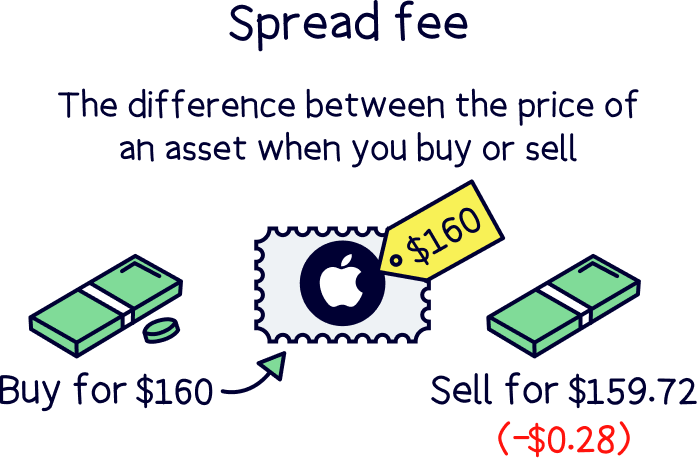
This is very common with almost all trading platforms, and how they make most of their money.
The actual spread (so the fee) varies across all different assets, it all depends on the volume of trades for that particular asset (how many people are trading the same asset) – and the volume at the particular time you are trading.
So, if it’s high volume, the spread is often lower in order for the platform to have competitive fees, and if there’s not much trading volume, the spread can be fairly high. (This is the same with all trading platforms.)
Overall, the spread fees are low compared with the industry in general. For instance some forex fees can be as low as 0.6 pips (0.00006), and stocks and indices are much lower.
As a comparison with XTB, another low cost broker, the minimum is 0.9 pips.
You’ll see the spread fee within the platform when you are researching an asset, and shown when you make a trade.
We won’t cover the ins and outs of all of the different spread fees here (for different assets), but you can learn more on the Plus500 website¹.
If you want to trade assets in another currency (not your own currency), for instance buying US stocks in Dollars, but your account is in Pounds, you’ll pay a fee (automatically) in order to buy the US stocks, and vice versa if you’re selling stocks.
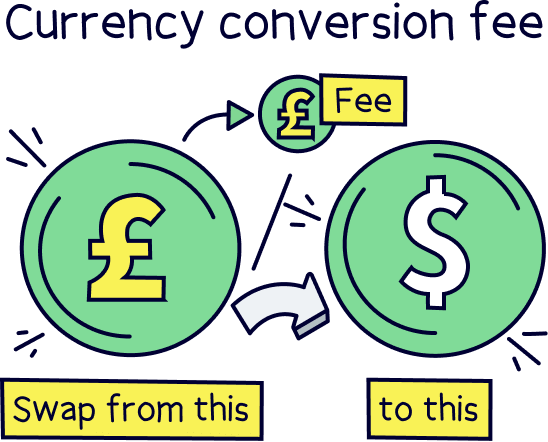
This is typical on all investment platforms, and with Plus500, you’ll pay 0.7%. That’s pretty reasonable overall for a trading platform – the range is typically around 0.45% to 1.5%, depending on the platform.
However, here’s where Plus500 is different, and can come in cheaper – you will only pay the currency conversion fee on the net profit (or loss) of your trade, not the total value of your position.
If you want to keep your position (trade) open overnight (e.g. for multiple days), you might also pay a small overnight funding fee – or, you might even get paid to hold a position, in order to balance out the volume on the platform.
It all depends on what the volume is like on the opposite side of your trade. For instance, if there’s lots of people making the same trade, trading a stock will go up, the fee might be higher if you are trading the same, and to balance it out you might get paid for trading it will go down.
The fee is a percentage of your trade volume, and normally applied around 10pm - 11pm each day (depending on the asset). This fee is mentioned when you view the asset, and make the trade.
If you want to use the guaranteed stop feature (where you are guaranteed the price if your stop order is executed), then you’ll pay an extra fee within the spread (e.g. the spread fee will be higher). You’ll see the higher fee when you set the stop.
This one you might want to watch out for. After 3 months of no activity, you’ll begin being charged $10 per month. However, if you are taking a break for longer than 3 months, all you need to do is log back in at some point, and the 3 months starts again (you don’t need to trade, just log in).
The customer support is excellent.
There’s a big FAQ section, which has pretty much every question you could think of covered – including lots of trading questions, not just questions about Plus500.
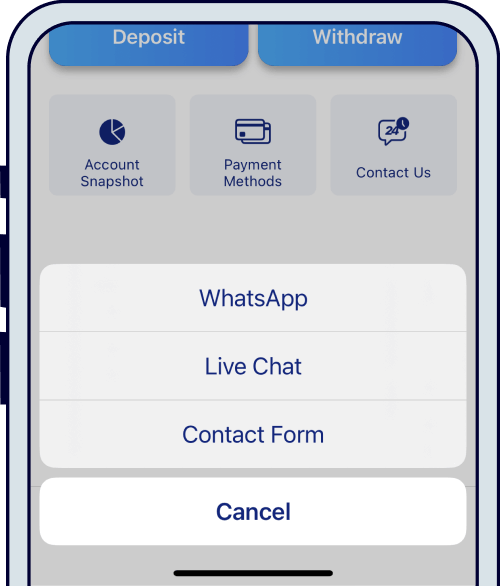
If that doesn’t answer your question, you can speak to customer support directly.
Support is 24/7, and all online, so you can get a response almost immediately. There’s a live chat feature where you can chat to them on your phone or computer. Or, you can email in, and even chat over WhatsApp.
Plus500 is one of the most trusted CFD platforms across the world. It’s used by over 24 million people worldwide.
It’s a FTSE 250 company, which means it’s one of the largest 250 companies listed on the London Stock Exchange (LSE) – the UK stock market. That’s big.
Plus500 is also authorised and regulated by the Financial Conduct Authority (FCA) in the UK. Their firm reference number is 509909. The FCA are the people who make sure financial services companies in the UK are looking after their customers. And, it’s regulated across the world by each country they operate in (over 50).
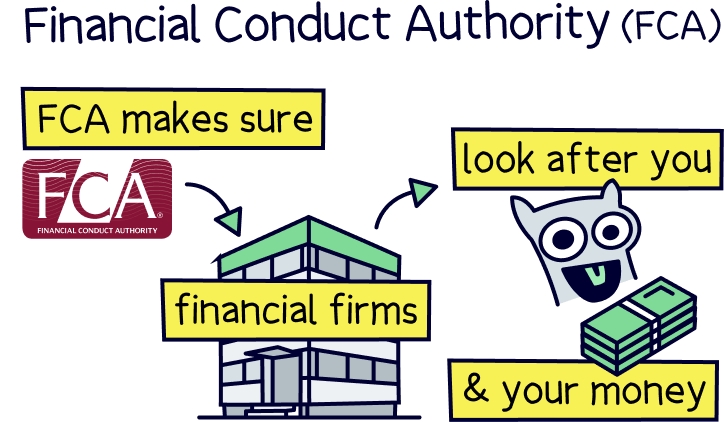
Your money is also held entirely separate from Plus500’s own money, and is stored with a large bank that Plus500 cannot access. So, if Plus500 were to go out of business, you’d still get all of your money back.
You are also entitled to the Financial Services Compensation Scheme (FSCS), which gives you further protection up to £85,000, if Plus500 were to go out of business.
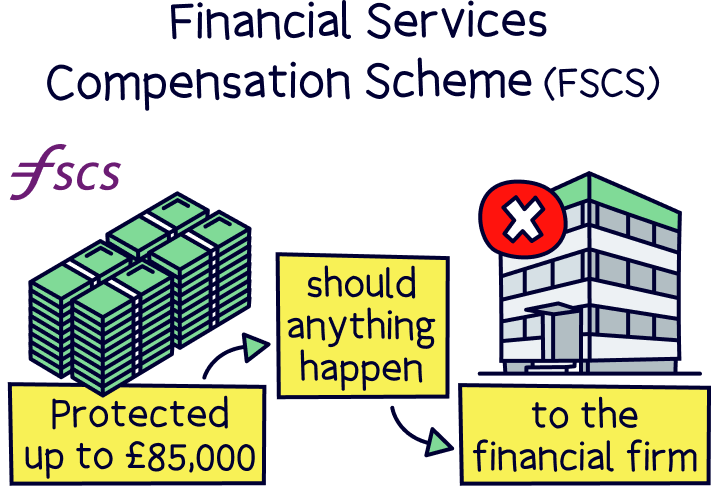
Here’s a quick recap and the pros and cons of Plus500:
Plus500 is super popular, and this definitely shows in the reviews! On Trustpilot, the popular reviews website, it has a score of 4.1 out of 5, which is great. And that’s from over 13,000 reviews!
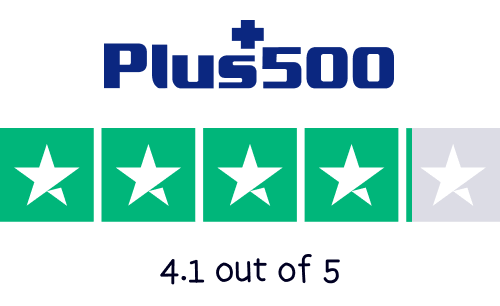
It’s a particularly good score for a financial services company, who typically get low scores due to poor customer service – but not with Plus500, their service is excellent.
Lots of the reviews mention how good the trading software is, alongside the great mobile app, and the reasonable fees and great customer service.
We love Plus500. It’s one of the most established trading platforms out there, is highly trusted, and super popular across the world – it’s pretty much the go-to place for traders.
The platform itself is user friendly, and there’s a range of features and options suited to advanced traders. And, there’s some pretty great features such as guaranteed stops (guaranteeing a price if the trade doesn’t go as planned).
There’s also an awesome, unique feature, called +Insights, where you can see insights (information) based on data from all the other traders on the platform, to help you make better trades. For instance, which stocks are becoming very popular, or most profitable, and most viewed.
The range of CFD investment options is large too – over 2,800. And, the fees are low, with almost all fees covered in the spread fee (and a currency conversion fee).
Overall, it’s excellent, and highly recommended for experienced traders. If you’re keen to learn more, or get started, head over to the Plus500 website¹.
Plus500 would like us to let you know that trading CFDs is not for everyone. Please make sure you understand the risks involved before trading, and please trade sensibly.
76% of retail investor accounts lose money when trading CFDs with this provider. You should consider whether you can afford to take the high risk of losing your money.
A great low cost trading platform with unique features to help you trade and excellent customer support.
A great low cost trading platform with unique features to help you trade and excellent customer support.
A great low cost trading platform with unique features to help you trade and excellent customer support.
We’d love to hear from you, and it will help others too.
A great low cost trading platform with unique features to help you trade and excellent customer support.